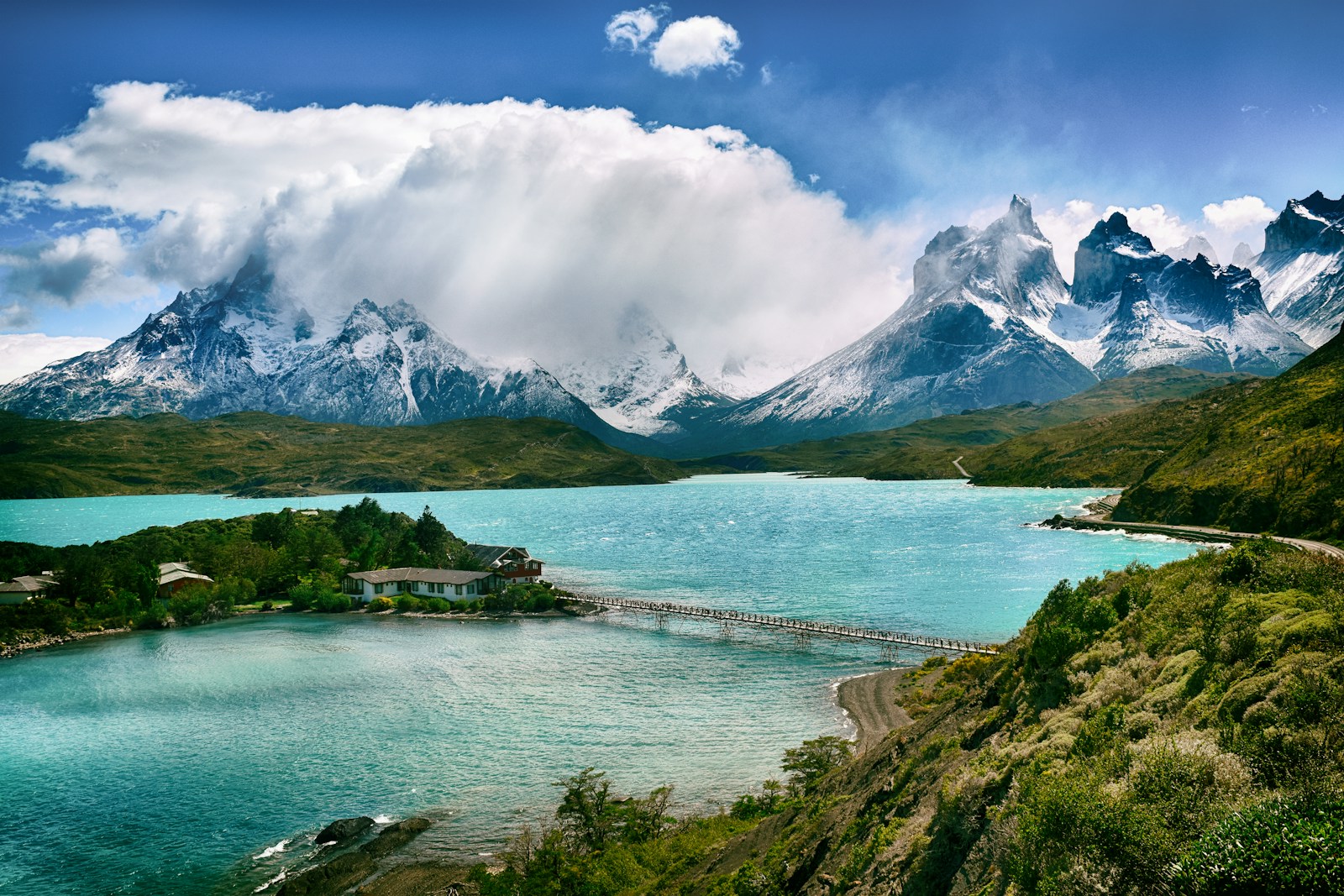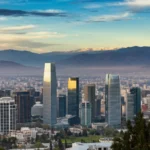Support our educational content for free when you purchase through links on our site. Learn more
How Do I Get Around Chile During My Vacation? 🚍✈️ (2025)
Planning your dream Chilean adventure but wondering how to navigate this long, narrow country without losing precious time (or sanity)? You’re not alone! From the bustling streets of Santiago to the remote fjords of Patagonia, getting around Chile can feel like solving a travel puzzle. But fear not — after countless bus rides, flights, and ferry crossings, the Chile Vacay™ team has cracked the code to seamless Chilean travel. 🚕🌄
Did you know Chile stretches over 4,300 kilometers from north to south? That’s like traveling from New York to Miami — twice! So choosing the right transport mode isn’t just about convenience; it’s about maximizing your adventure. In this guide, we reveal 7 essential ways to get around Chile efficiently, safely, and with a touch of local flair. Ready to discover insider tips on buses, metros, rental cars, flights, and even island ferries? Let’s dive in!
Key Takeaways
- Buses are the budget-friendly backbone of Chilean travel, with companies like Pullman and Turbus offering comfy overnight rides across the country.
- Santiago’s Metro and urban taxis (plus Uber and Cabify) make city travel fast and safe.
- Renting a car unlocks Chile’s wildest landscapes, especially in Patagonia and the Lake District — but be prepared for some rugged roads.
- Domestic flights with LATAM, Sky Airline, and JetSmart save you hours on long-distance routes.
- Ferries are essential for exploring southern islands like Chiloé and Tierra del Fuego.
- Accessibility is improving, but plan ahead if you have mobility needs.
Ready to book your transport?
- Bus tickets: Pullman Bus | Turbus
- Flights: LATAM Airlines | Sky Airline | JetSmart
- Rental Cars: RentalCars.com | Hertz Chile | Avis Chile
With this guide, you’ll navigate Chile like a seasoned local — and spend more time soaking up the breathtaking landscapes and vibrant culture. Ready to hit the road?
Table of Contents
- ⚡️ Quick Tips and Must-Know Facts for Getting Around Chile
- 🌎 Navigating Chile: A Traveler’s Guide to Transportation Options
- 🚍 1. Mastering Long-Distance Travel: How to Cover Chile’s Vast Terrain by Bus
- 🚕 2. City Slicker’s Guide: Exploring Chilean Cities Efficiently by Taxi and Ride-Sharing
- 🚆 3. Urban Rail Adventures: Using Trains and Metro Systems in Chile’s Major Cities
- 🚴♂️ 4. Pedal Power: Biking Through Chile’s Cities and Scenic Wilderness Trails
- 🚗 5. Unlocking Freedom: Why Renting a Car is Your Best Bet for Exploring Chile’s Wild Side
- ✈️ 6. Flying High: How to Use Domestic Flights to Save Time and See More
- ⛴️ 7. Island Hopping and Coastal Cruises: Exploring Chile’s Southern Archipelagos by Boat
- ♿ Accessibility Matters: Navigating Chile with Mobility and Special Needs
- 📚 Get Inspired: Best Travel Books and Guides to Plan Your Chilean Adventure
- 🗺️ Explore Related Stories: Insider Tips and Hidden Gems from Chile Vacay™
- 💡 Conclusion: Your Ultimate Chile Transportation Cheat Sheet
- 🔗 Recommended Links for Booking and Travel Resources
- ❓ Frequently Asked Questions About Getting Around Chile
- 📑 Reference Links and Sources for Further Reading
⚡️ Quick Tips and Must-Know Facts for Getting Around Chile
Welcome to the ultimate guide on how to get around Chile during your vacation! Whether you’re dreaming of the Atacama Desert’s red dunes, the vibrant streets of Santiago, or the wild fjords of Patagonia, moving around this long, skinny country can be an adventure in itself. At Chile Vacay™, we’ve logged thousands of kilometers on buses, taxis, rental cars, planes, and even ferries — and we’re here to spill the beans on what works best. 🚍✈️🚗
Here are some quick nuggets to keep in mind before we dive deep:
- ✅ Buses are king for budget-friendly, long-distance travel. Companies like Pullman Bus and Turbus dominate the scene with comfy, air-conditioned coaches.
- ✅ Santiago’s Metro is fast, cheap, and safe — grab a “Tarjeta bip!” card for easy rides.
- ✅ Taxis and ride-sharing apps like Uber and Cabify are widely available in major cities but always opt for licensed taxis at night.
- ✅ Rental cars unlock Chile’s wildest corners but expect some rough roads and higher fuel prices.
- ✅ Domestic flights with LATAM, Sky Airline, and JetSmart save time on long hauls.
- ✅ Ferries and boats are essential for exploring southern islands like Chiloé and Tierra del Fuego.
- ❌ Trains are limited mostly to urban metros and a few tourist routes.
- ♿ Accessibility is improving but still limited outside big cities.
For more insider tips and detailed breakdowns, keep reading — we’re just getting started! And if you want to get a feel for Chile Vacay™ and our travel philosophy, check out our Chile Vacay™ homepage.
🌎 Navigating Chile: A Traveler’s Guide to Transportation Options Chile’s geography is a travel paradox: it’s a long, narrow country stretching over 4,300 km from the driest desert in the north to the icy fjords of the south. This means your choice of transportation depends heavily on where you’re headed and how much time you have.
Key modes of transport:
- Buses: The backbone of Chilean travel, connecting cities and towns with frequent schedules.
- Metro and trains: Primarily in Santiago and some coastal cities.
- Taxis and ride-shares: Convenient for urban travel.
- Rental cars: Ideal for remote areas and flexible itineraries.
- Domestic flights: Essential for saving time on long distances.
- Boats and ferries: Crucial for island access and southern Patagonia.
Chile’s infrastructure is generally good in urban areas but can get rugged in remote regions like the Carretera Austral or Altiplano. Safety-wise, Chile is one of Latin America’s more stable countries, but always stay alert, especially in crowded bus stations or at night in big cities.
🚍 1. Mastering Long-Distance Travel: How to Cover Chile’s Vast Terrain by Bus
If you want to travel like a local and save money, buses are your best friend. Chile boasts a modern, comfortable intercity bus network that’s often overlooked by tourists rushing to fly.
Top Bus Companies
| Company | Coverage | Comfort Level | Extras | Booking Website |
|---|---|---|---|---|
| Pullman Bus | Nationwide | 8/10 (semi cama seats) | Wi-Fi, USB outlets, snacks | pullman.cl |
| Turbus | Nationwide | 7/10 (salón cama seats) | Wi-Fi, onboard attendants | turbus.cl |
| Cruz del Sur | Major routes | 8/10 | Snacks, entertainment | cruzdelsur.cl |
| Buses JAC | Northern Chile & niche | 6/10 | Basic amenities | Local booking sites |
Why We Love Chilean Buses
- Comfort: Most long-distance buses have reclining “semi cama” or “salón cama” seats, which are basically mini beds. Perfect for overnight trips!
- Onboard perks: Wi-Fi, USB charging, and sometimes even snacks or light breakfast.
- Safety: Buses generally depart on time and are well-maintained.
- Affordability: Tickets are budget-friendly compared to flights.
Pro Tips for Bus Travel
- Book tickets online in advance via Recorrido — an English-friendly platform that compares prices and schedules.
- Confirm your arrival and departure terminals — some companies use different stations in big cities like Santiago or Valparaíso.
- Keep an eye on your belongings, especially at bus terminals where petty theft can occur.
- For scenic routes like the Carretera Austral, book early as seats fill fast during high season.
Our personal favorite? The overnight bus from Santiago to Puerto Montt — wake up to the stunning Lake District ready to explore!
🚕 2. City Slicker’s Guide: Exploring Chilean Cities Efficiently by Taxi and Ride-Sharing
Once you’re in the city, taxis and ride-sharing apps are the easiest way to get around quickly and safely.
Taxi and Ride-Share Landscape
| Service | Availability | Safety | Payment Options | Notes |
|---|---|---|---|---|
| Licensed Taxis | Most cities & airports | ✅ Recommended at night | Cash & card (varies) | Use official taxi stands or call ahead |
| Uber | Santiago, Valparaíso, Concepción | ✅ Generally safe | App payment | Surge pricing during peak hours |
| Cabify | Santiago and select cities | ✅ Safe | App payment | Often cheaper than Uber |
| Colectivos | Smaller towns | Mixed | Cash | Shared taxis on fixed routes |
Our Taxi Tips
- At night, opt for licensed taxis or pre-booked rides for safety.
- Use apps like Uber or Cabify in Santiago for convenience and upfront pricing.
- Always confirm the fare or ask for the meter to be used.
- For airport transfers, official taxis are best — avoid touts.
We once took a taxi from Santiago’s Providencia neighborhood to the airport after a late-night dinner — the driver was friendly, the ride smooth, and we felt safe the entire time. 🚖
🚆 3. Urban Rail Adventures: Using Trains and Metro Systems in Chile’s Major Cities
Chile’s train network is limited but the Santiago Metro is a game-changer for city travel.
Santiago Metro Highlights
- 6 lines covering most of the city and suburbs.
- Use the Tarjeta bip!, a rechargeable contactless card, for seamless rides.
- Trains run frequently from early morning until midnight.
- Stations and trains are clean, safe, and well-signposted.
- Some stations have elevators and ramps for accessibility.
Other Rail Options
- Valparaíso Metro: Connects Valparaíso and Viña del Mar; great for beach day trips.
- Empresa de los Ferrocarriles del Estado (EFE): Offers limited tourist trains, like Santiago to Chillán.
Tips for Metro Travel
- Avoid rush hours if you want a seat (7-9am and 6-8pm).
- Watch your belongings — pickpocketing can happen in crowded trains.
- Download the official Metro app for route planning.
The Santiago Metro is our go-to for zipping around the capital — it’s fast, cheap, and a great way to avoid traffic jams.
🚴♂️ 4. Pedal Power: Biking Through Chile’s Cities and Scenic Wilderness Trails
Chile is surprisingly bike-friendly, especially in urban centers and nature hotspots.
Urban Biking
- Santiago: Extensive ciclovías (bike lanes) and the Bike Itaú bike-share program.
- Other bike-friendly cities: Viña del Mar, Concepción, Temuco, Puerto Varas.
- Bikes are great for short trips and exploring neighborhoods.
Wilderness and Adventure Cycling
- The Lake District and Carretera Austral offer epic multi-day rides.
- Use a bici todo terreno (mountain bike) with sturdy tires.
- Carry essentials: water, food, repair kit, and spare tubes.
- Motorists are generally courteous, but always stay alert.
Renting and Buying Bikes
- Santiago has several rental shops like Biking Santiago and Chile Bike Rental.
- For longer trips, consider buying a used bike locally — cheaper and easier to customize.
We once biked around Valparaíso’s colorful hills, stopping for empanadas and ocean views — a perfect blend of exercise and sightseeing!
🚗 5. Unlocking Freedom: Why Renting a Car is Your Best Bet for Exploring Chile’s Wild Side
If you crave flexibility and off-the-beaten-path adventures, a rental car is your golden ticket.
Rental Car Essentials
| Aspect | Details |
|---|---|
| License | International Driving Permit recommended but not always required |
| Vehicle Types | Manual cars are cheaper and common; automatics available |
| Insurance | Essential — check coverage carefully |
| Fuel | Expensive; plan fuel stops in remote areas |
| Road Conditions | Mostly paved on main routes; gravel and dirt in Patagonia and Altiplano |
| Toll Roads | Pan-American Highway has tolls; keep cash handy |
Recommended Rental Companies
- Hertz Chile
- Avis Chile
- Europcar Chile
- Chilean local companies like Chile Rent a Car
Driving Tips
- Rent your car upon arrival rather than driving from Santiago.
- Avoid driving at night in rural areas.
- Carry a spare tire and emergency kit.
- Respect speed limits and local driving customs.
We drove the Carretera Austral in a 4×4 rental — the rugged landscapes and freedom to stop anywhere made it unforgettable. Just watch out for potholes and sudden weather changes!
✈️ 6. Flying High: How to Use Domestic Flights to Save Time and See More
Chile’s length makes flying a smart choice for covering big distances quickly.
Main Airlines
| Airline | Coverage | Price Range | Baggage Policy | Notes |
|---|---|---|---|---|
| LATAM | Nationwide & international | Mid to high | Includes carry-on + checked baggage | Most reliable and frequent flights |
| Sky Airline | Domestic & some intl | Budget-friendly | Often carry-on only on cheapest fares | Good for last-minute deals |
| JetSmart | Domestic low-cost | Cheapest fares | Strict baggage rules | Watch for add-ons |
Popular Domestic Routes
- Santiago ⇄ Puerto Montt (Lake District gateway)
- Santiago ⇄ Calama (Atacama Desert)
- Santiago ⇄ Punta Arenas (Patagonia)
- Puerto Montt ⇄ Puerto Natales (for Torres del Paine)
Booking Tips
- Book early for best prices.
- Check baggage rules carefully to avoid fees.
- Use airline apps for easy check-in and flight updates.
Flying saved us hours on the Santiago-to-Puerto Natales leg — more time for hiking and less time on winding roads!
⛴️ 7. Island Hopping and Coastal Cruises: Exploring Chile’s Southern Archipelagos by Boat
Chile’s southern coast is a watery wonderland, with islands, fjords, and channels begging to be explored by boat.
Key Ferry Routes
| Route | Frequency | Duration | Notes |
|---|---|---|---|
| Puerto Montt ⇄ Chiloé Island | Multiple daily | 1-2 hours | Essential for Chiloé access |
| Puerto Natales ⇄ Puerto Yungay | Seasonal | 3-4 hours | Gateway to Carretera Austral |
| Punta Arenas ⇄ Puerto Williams | Weekly | 10+ hours | Remote Tierra del Fuego access |
Boat Tours and Cruises
- Patagonia fjord cruises from Puerto Natales or Puerto Montt.
- Scenic ferry from Petrohué to San Carlos de Bariloche (Argentina).
- Adventure routes like Villa O’Higgins to Candelario Mancilla for trekking.
What to Expect
- Weather can be unpredictable; dress in layers.
- Some ferries allow vehicles; others are passenger-only.
- Book in advance during high season.
We took the ferry from Puerto Montt to Chiloé and were treated to playful dolphins and stunning coastal views — a magical start to island adventures.
♿ Accessibility Matters: Navigating Chile with Mobility and Special Needs
Chile is making strides but still has challenges for travelers with disabilities.
Accessibility Overview
- Urban areas: Santiago Metro and buses have some wheelchair access and ramps.
- Sidewalks: Often uneven or narrow, especially outside big cities.
- Hotels: Few have fully accessible rooms; book in advance and confirm.
- Tour companies: Wheel the World offers specialized tours and equipment rentals.
- Airports: Generally accessible with assistance available on request.
Tips for Accessible Travel
- Contact accommodations and transport providers ahead of time.
- Use mobility aids designed for rough terrain if exploring nature.
- Consider hiring a local guide familiar with accessibility needs.
For more info, check out Wheel the World’s Chile offerings.
📚 Get Inspired: Best Travel Books and Guides to Plan Your Chilean Adventure
Nothing beats a good book to fuel your wanderlust and plan your route.
Recommended Reads
- “Lonely Planet Chile & Easter Island” — The classic, packed with practical tips and maps.
- “Moon Chile” by Kelly B. Cormier — Great for offbeat adventures and cultural insights.
- “The Rough Guide to Chile” — Detailed and comprehensive.
- “Wild Patagonia” by James McCarthy — For nature lovers and hikers.
- “Chile Travel Guide 2024” by On My Canvas — Up-to-date info from a seasoned traveler.
Why We Love Travel Guides
- Insider tips on hidden gems.
- Maps and transport info.
- Safety advice and cultural etiquette.
- Inspiration for your itinerary.
Grab a copy before you go, and you’ll feel like a local before you even land!
🗺️ Explore Related Stories: Insider Tips and Hidden Gems from Chile Vacay™
Want more juicy travel stories and practical advice? Check out these fan favorites from Chile Vacay™:
- Top 10 Must-See Places in Chile
- How to Survive and Thrive on Chile’s Long Bus Rides
- Santiago Nightlife: Where to Go and What to Avoid
- Renting a Car in Chile: What You Need to Know
- Patagonia by Boat: Exploring the Fjords and Islands
Each story is packed with tips, personal anecdotes, and honest reviews to help you travel smarter and have more fun.
💡 Conclusion: Your Ultimate Chile Transportation Cheat Sheet
Phew! We’ve covered a lot of ground—literally—on how to get around Chile during your vacation. From hopping on ultra-comfy long-distance buses with Pullman and Turbus, to zipping through Santiago’s efficient Metro system, or embracing the freedom of a rental car to explore Patagonia’s wild corners, Chile offers a transportation option for every type of traveler. ✈️🚍🚗
Here’s the bottom line from Chile Vacay™:
- Buses are unbeatable for budget-conscious travelers who want to soak in the scenery and meet locals.
- Taxis and ride-shares provide quick, safe urban mobility, especially after dark.
- Metro and trains shine in Santiago and Valparaíso but don’t expect extensive rail networks elsewhere.
- Biking is a fun, eco-friendly way to explore cities and nature trails if you’re up for some pedal power.
- Rental cars are your best bet for ultimate flexibility and off-the-beaten-path adventures, but be prepared for some rough roads and higher costs.
- Domestic flights with LATAM, Sky Airline, and JetSmart save precious time on long routes.
- Boats and ferries unlock Chile’s magical southern archipelagos and fjords.
- Accessibility is improving but still limited outside major cities—plan ahead if you have special needs.
No matter your style, Chile’s diverse transport options make it easy to tailor your trip. So pack your bags, grab your travel guide, and get ready to explore one of South America’s most breathtaking countries with confidence and ease. Need more inspiration? Don’t miss our related stories for insider tips and hidden gems!
🔗 Recommended Links for Booking and Travel Resources
Ready to book your Chilean adventure? Here are some handy links to get you started:
- Pullman Bus Tickets: Amazon Search | Pullman Official Website
- Turbus Bus Tickets: Amazon Search | Turbus Official Website
- LATAM Airlines: Amazon Search | LATAM Official Website
- Sky Airline: Amazon Search | Sky Airline Official Website
- JetSmart Airlines: Amazon Search | JetSmart Official Website
- Rental Cars in Chile: RentalCars.com | Hertz Chile | Avis Chile
- Bike Itaú Santiago: Bike Itaú Official
- Wheel the World (Accessible Tours): Wheel the World Chile
Recommended Travel Books on Amazon:
- Lonely Planet Chile & Easter Island
- Moon Chile by Kelly B. Cormier
- The Rough Guide to Chile
- Wild Patagonia by James McCarthy
❓ Frequently Asked Questions About Getting Around Chile
What are the best ways to travel from Santiago to other cities in Chile?
The most popular and practical options are long-distance buses and domestic flights. Buses from companies like Pullman and Turbus offer comfortable overnight services to cities like Puerto Montt, Valparaíso, and Antofagasta. If time is tight, domestic flights with LATAM or Sky Airline can cut travel time dramatically. For example, flying from Santiago to Puerto Natales saves you a 24-hour bus ride.
How do I rent a car in Chile and what are the requirements?
To rent a car, you typically need a valid driver’s license from your home country; an International Driving Permit (IDP) is recommended but not always mandatory. Drivers must be at least 21 years old, and some companies require drivers to be 25+. Insurance is a must, and manual transmission cars are more common and cheaper. Renting upon arrival in Chilean cities is easier than booking from abroad. Remember, some rural roads are unpaved and challenging, so choose your vehicle accordingly.
Are there any budget-friendly transportation options in Chile for tourists?
Absolutely! Long-distance buses are the most budget-friendly way to travel between cities. Within cities, public buses (“micros”) and the Santiago Metro offer cheap fares. Ride-sharing apps like Uber and Cabify can be affordable alternatives to taxis. For the adventurous, colectivos (shared taxis) in smaller towns provide cheap rides on fixed routes.
Can I use public transportation to get around Chile, and is it reliable?
Yes, especially in major cities like Santiago, Valparaíso, and Concepción. The Santiago Metro is fast, clean, and reliable. Urban buses operate widely but can be crowded and less punctual. For intercity travel, buses are reliable and comfortable. However, always plan for some delays and keep valuables secure.
What are the most scenic routes to take when driving through Chile?
The Carretera Austral is legendary for its breathtaking fjords, forests, and glaciers. The drive from Puerto Montt to Coyhaique is a must. The Pan-American Highway along the coast offers stunning ocean views, especially near Valparaíso and La Serena. The route between San Pedro de Atacama and Calama showcases otherworldly desert landscapes.
How do I get to Easter Island from mainland Chile, and what are my transportation options?
Easter Island (Rapa Nui) is accessible only by air. LATAM Airlines operates regular flights from Santiago to Mataveri International Airport on Easter Island. The flight takes about 5-6 hours. There are no ferries due to the vast Pacific distance. Booking flights well in advance is crucial as seats fill quickly.
Are there any domestic flights within Chile that can help me save time during my vacation?
Yes! Domestic flights are highly recommended for long distances. Routes like Santiago to Puerto Montt, Punta Arenas, Calama (for Atacama), and Puerto Natales are well-served by LATAM, Sky Airline, and JetSmart. These flights save days of travel time and allow you to maximize your itinerary.
How safe is it to use taxis and ride-sharing apps in Chile?
Taxis are generally safe, especially licensed ones and airport taxis. Ride-sharing apps like Uber and Cabify operate in major cities and are considered safe, but it’s wise to check driver ratings and avoid hailing taxis on the street late at night. Always confirm the fare or use the app’s meter feature.
What should I know about ferry travel in southern Chile?
Ferries are essential for reaching islands like Chiloé and navigating Patagonia’s fjords. Routes can be seasonal and weather-dependent, so check schedules in advance. Some ferries allow vehicles, which is handy if you’re driving the Carretera Austral. Dress warmly and be prepared for rough seas.
📑 Reference Links and Sources for Further Reading
- Pullman Bus Official Website
- Turbus Official Website
- LATAM Airlines
- Sky Airline
- JetSmart
- Santiago Metro & Tarjeta bip!
- Wheel the World – Accessible Travel in Chile
- Recorrido – Bus Booking Platform
- Chile Travel Guide 2024 | On My Canvas
- Senapred – Chilean National Emergency Office (Volcano Alerts)
- Smithsonian Global Volcanism Program – Chile Volcanoes
For more expert tips and stories, visit Chile Vacay™.
Ready to hit the road, sky, or sea? Chile’s transport options are as diverse as its landscapes — and now you’re equipped to navigate them like a pro. Buen viaje! 🌎🚀





